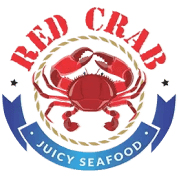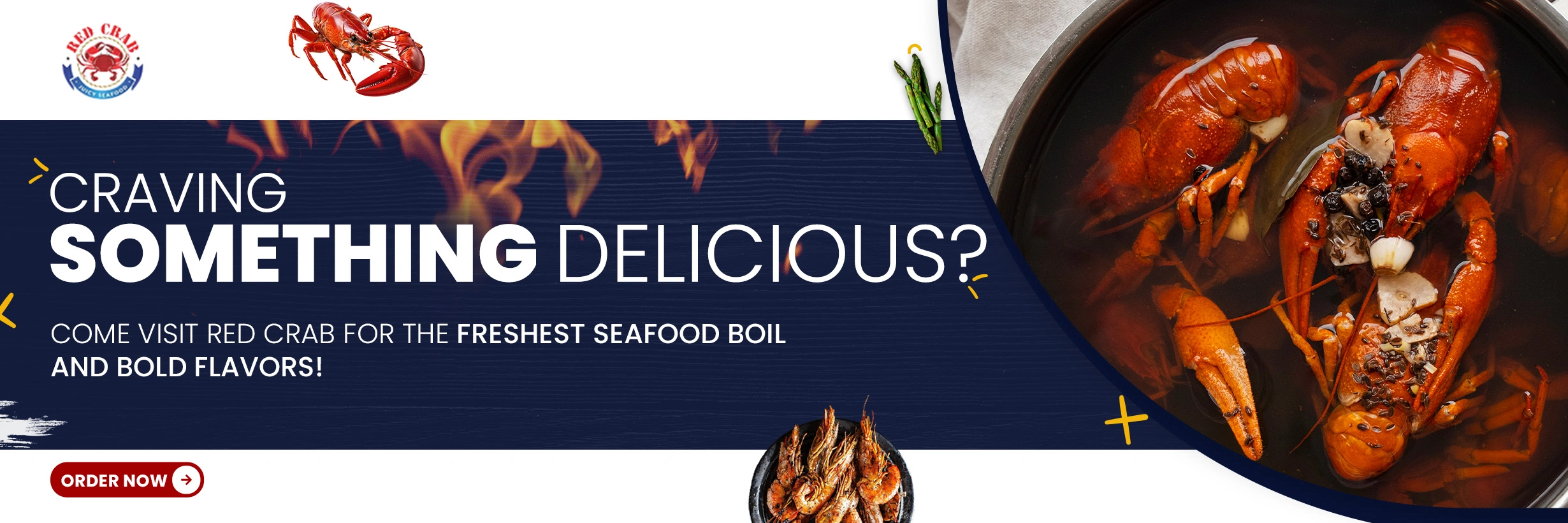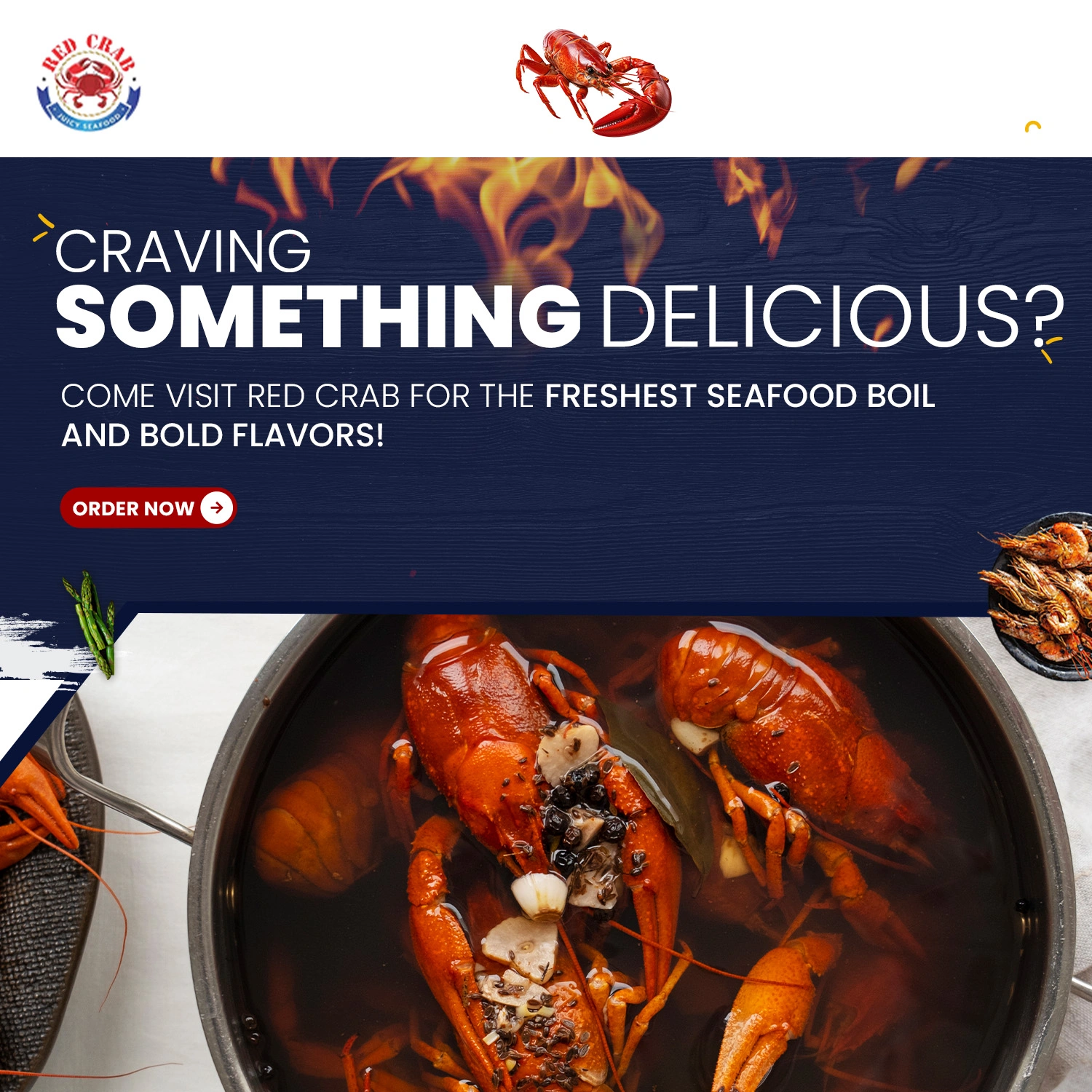Types of Lobsters
Lobsters are pretty cool creatures that come in all different shapes, sizes, and colors. People love eating them because they taste really good. However, did you know that a long time ago, only people near the shore used to eat them? Now, everyone can enjoy them because we have better ways of keeping them fresh and getting them to different places far from shore. There are 75 types of lobster in the world. So, they all taste a little different depending on where they live and the lobster recipe you make. Whether you live by the ocean or in a big city, you can still have a yummy lobster dinner!
Table of Contents
When you go out to eat, lobster is usually one of the priciest meals on the menu. Lobster has tender, juicy meat that’s just amazing. There are all different types of lobster out there, from big and colorful ones to smaller, not-so-fancy ones. Trying out the different types of lobster can be a cool way to learn about them and their health benefits. Whether it’s Maine Lobster or California spiny lobster, there’s a lot to choose from when you’re picking out the right types of lobster for your meal.
In this blog, we’re going to talk about where you can find these yummy sea critters and how to cook them up just right to keep all the good stuff in. We’ll also share some tips on how to pick out the freshest lobsters, so you can impress your friends and family with a delicious seafood feast.
Understanding types of Lobsters
Warm Water vs. Cold Water
Different types of lobster grow differently depending on the water they live in. Warm-water lobsters have smaller front claws compared to cold-water ones. They have more tail meat and cost less. Lobsters in warm climates like California and the Caribbean are warm-water lobsters.
When people hear the word “lobster“, they usually picture cold-water lobsters. You know the ones with five sets of legs and big claws? They’re usually found in the North Atlantic around Maine and Niagara Falls. Kids love to drag their parents to the supermarket lobster tank just to stare at them. These types of lobster have that yummy, sweet taste and their meat is juicy and firm. That’s why they’re so popular and have been a favorite for a long time.
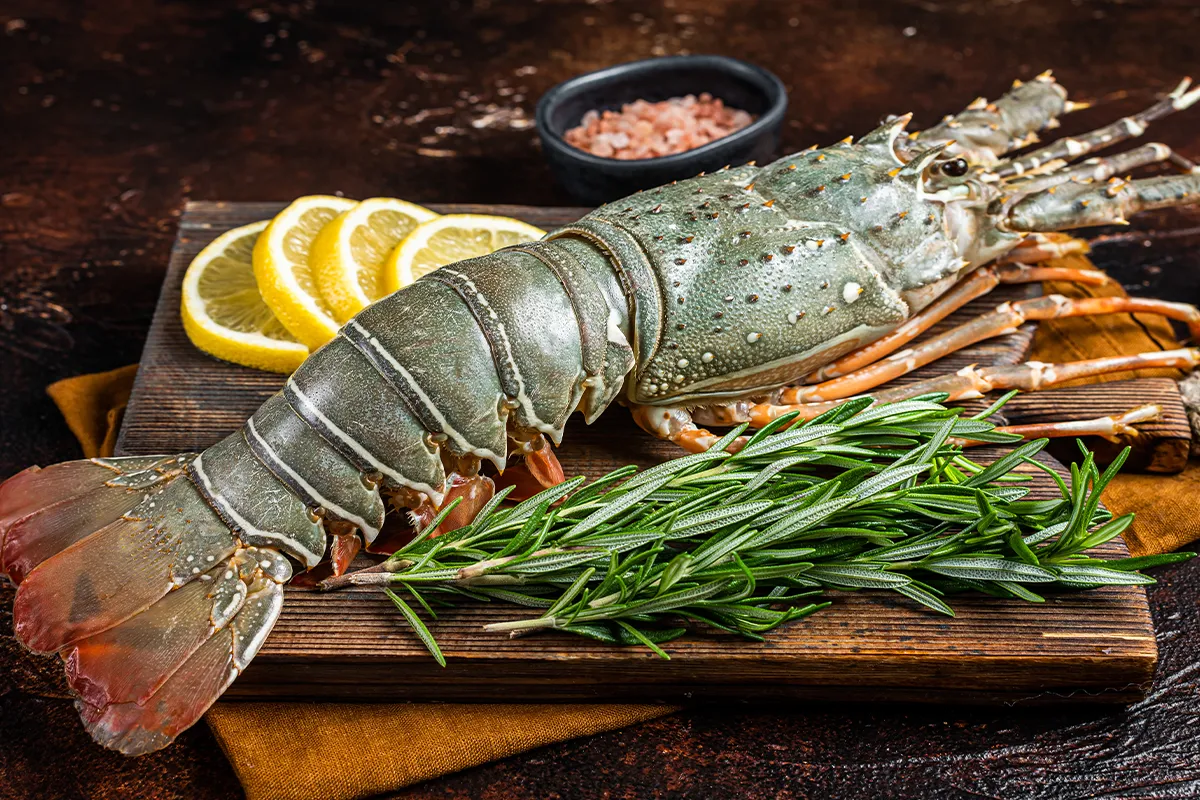
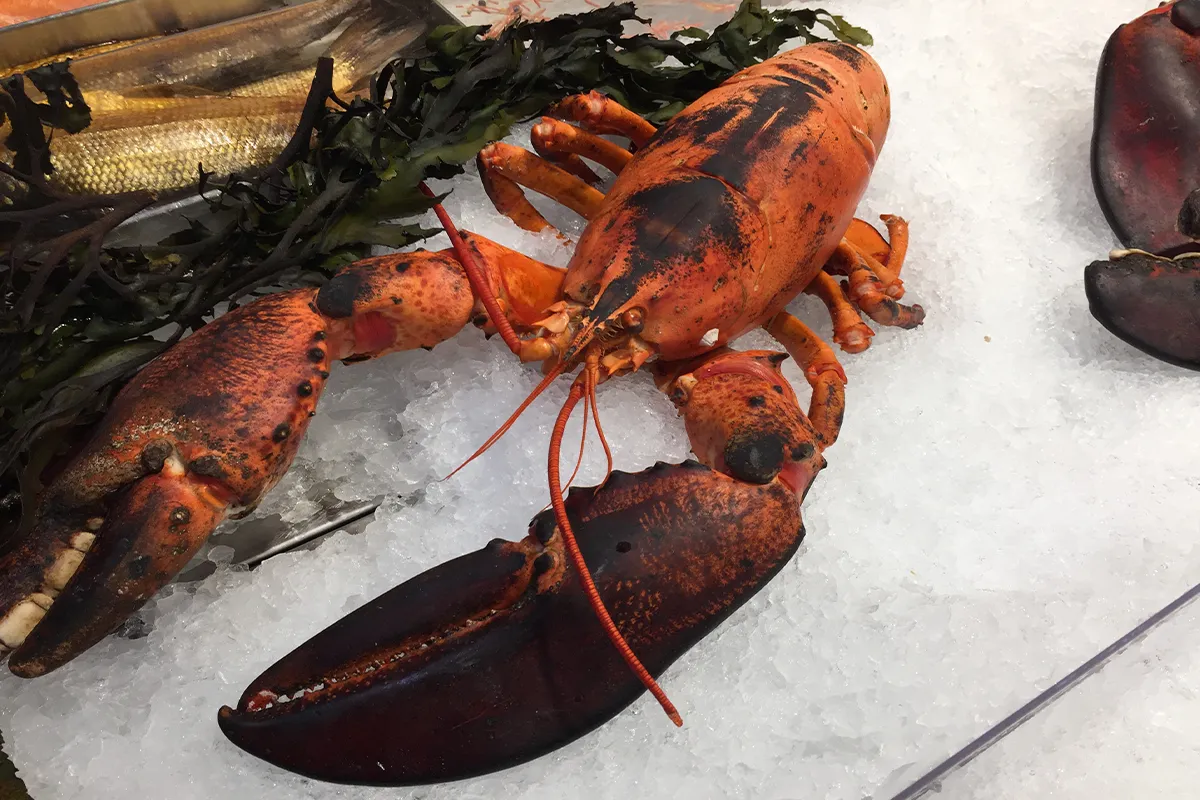
Hard Shell vs. Soft Shell
Just like crabs, lobsters also go through different stages of molting throughout the year. These molting stages affect how the lobster tastes, how it cooks, and what goes well with it. Both restaurants and home cooks need to consider these factors when choosing between the two.
Soft-shell lobsters are a bit tricky to transport and keep alive because their shell doesn’t provide the same level of protection after molting. However, if you can get a soft-shelled lobster from a location nearby or have it shipped to you frozen, you can enjoy the unique flavor that comes from the water-filled shell. Usually, the season for soft-shell lobster is from July to late September.
Now let’s take a detailed look at the types of lobster we have listed for you!
New Zealand Rock Lobster
The New Zealand rock lobster, also known as Kaura, can weigh between one and ten pounds. Most of their weight is in their tail because they don’t have claws like other warm-water lobster species. They’re pretty common in the waters around New Zealand and can also be found in Australia. If you want to find one, look near rocky areas along the coast. You can spot them on the east coasts of both the North and South Islands and around the southwest coast of the South Island.
When it comes to cooking these types of lobster, boiling them in salt water is the best way. But you can also parboil them and grill them with some butter for a tasty treat!
Hard-shell Maine Lobster
However, it’s unique because of where it lives. You can spot the Maine lobster in the North Atlantic, off the east coast of the United States, especially near New England and Maine.
The Maine lobster is smaller than the Canadian lobster because it lives in slightly warmer waters. Even though it’s smaller, its meat is sweeter, which makes it just as good. The “hard shell” part of the name comes from how long it’s been since the lobster last shed its shell. Hard shell lobsters are usually farmed between fall and spring.
They usually have about 20% more meat in their shells than soft-shell lobsters, and they’re also tougher. This means that hard-shell lobsters can be taken farther and kept alive for a longer time than soft-shell lobsters. This is because hard-shell lobsters have a stronger shell which helps them survive better. So, if you live away from the coast and see fresh lobsters in a local restaurant, they’re probably the hard-shell kind. Hard shell types of lobster are strong and can be grilled, unlike soft-shell lobsters.
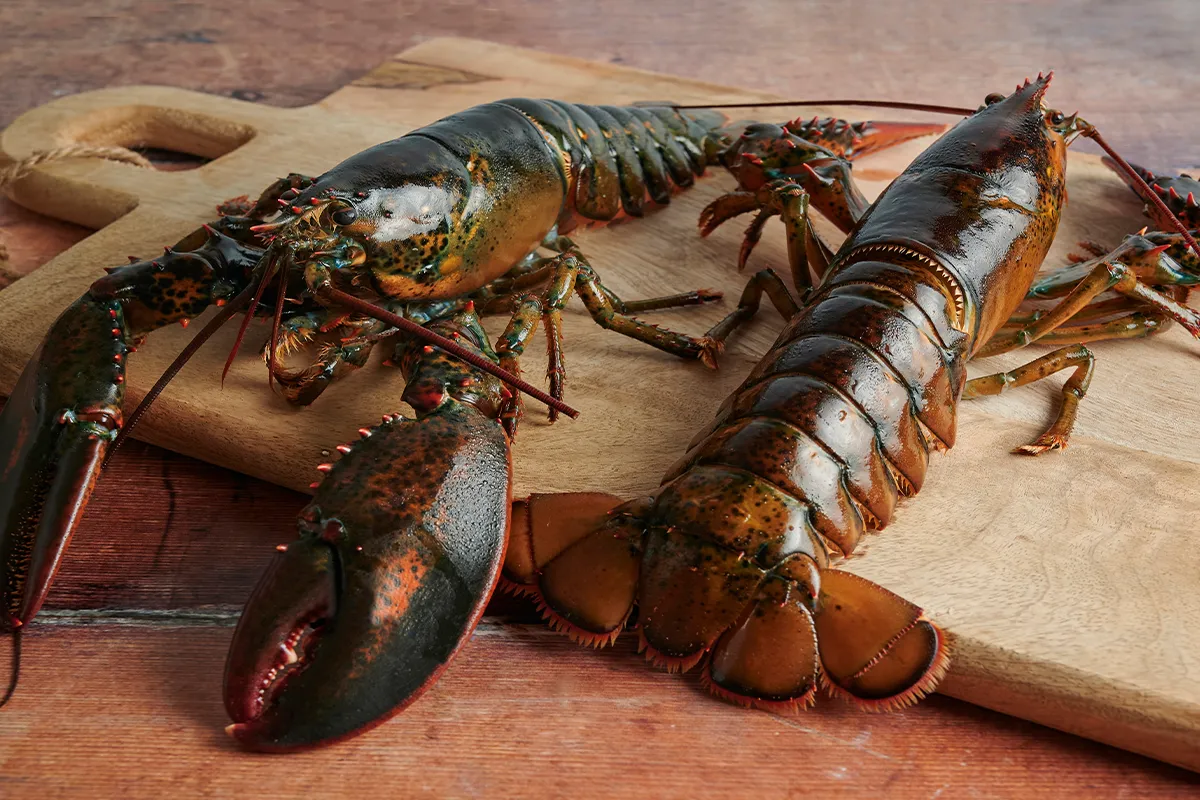
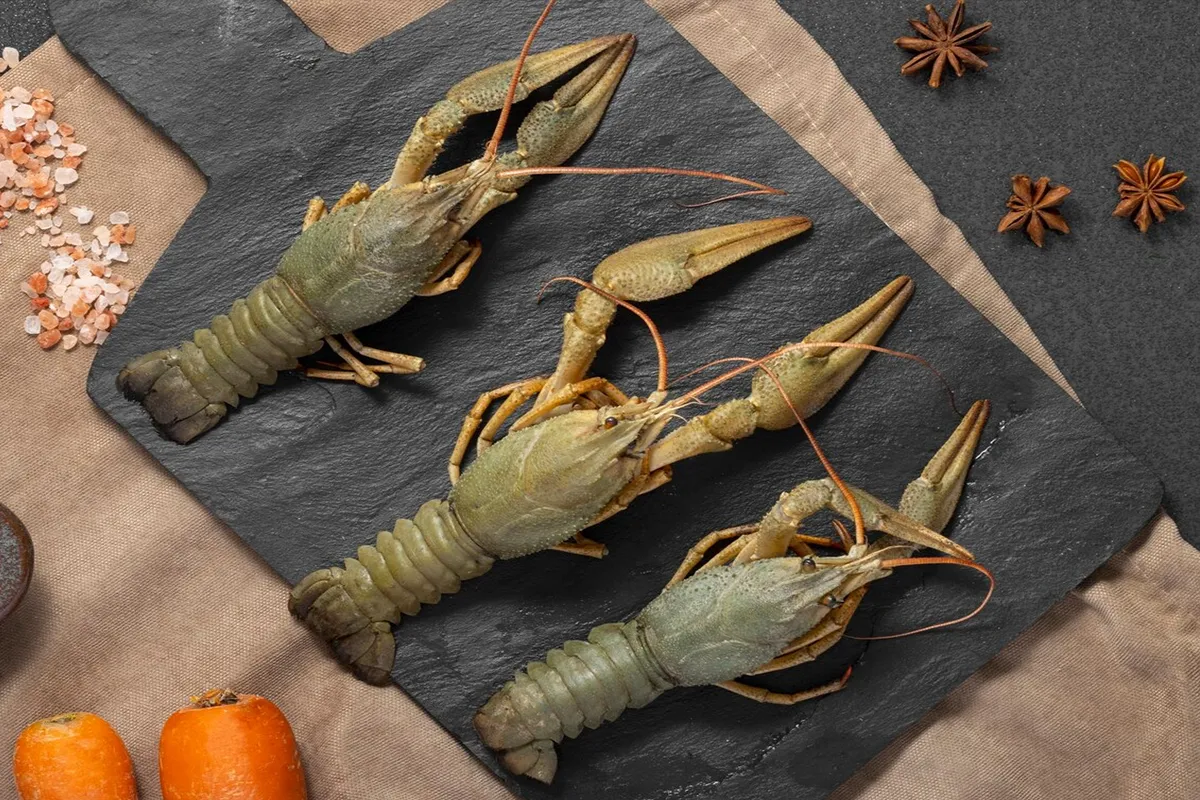
Soft-shell Maine Lobster
The soft-shell version of the Maine lobster is the same types of lobster as the hard-shell one, except it has shed its old shell more recently and its new one is still getting hard. Soft-shell lobsters are usually caught in the summer, and they’re not as tough as the hard-shell ones. So, it’s really hard to move them away from the coastal areas where they’re caught. This means you can find a lot of them in places like coastal Maine, and they’re usually cheaper.
Since their new shell has a lot of space for growing, there’s less meat inside a soft-shell lobster compared to a hard shell of the same weight. But because the space that would be meat is filled with water, the lobster ends up extra tender because the water soaks into the meat while cooking. For the best results, try boiling your soft-shell lobster in salt water, as this won’t mess up the delicate meat. If you want to jazz up the dish a bit, you could make a classic New England lobster roll by mixing chunks of lobster meat with mayo and putting them in a buttery toasted hot dog bun.
Canadian Lobster
Just like how people have different flavors and sizes, lobsters from Canada are a bit different from the ones in Maine. They are still the same types of lobster, but the ones from Canada are bigger and not as sweet. Their shells and meat are also denser, but not too different. Since not many people talk about Canadian lobsters, they are usually cheaper than Maine lobsters. So, if you love lobsters but don’t want to spend too much money, Canadian lobsters could be a good choice.
Canadian lobsters have dense meat and thick shells, so they are great for strong cooking methods. If you want to bake or barbecue a lobster and are worried about making mistakes, a Canadian lobster might be a better choice because it’s not too expensive.
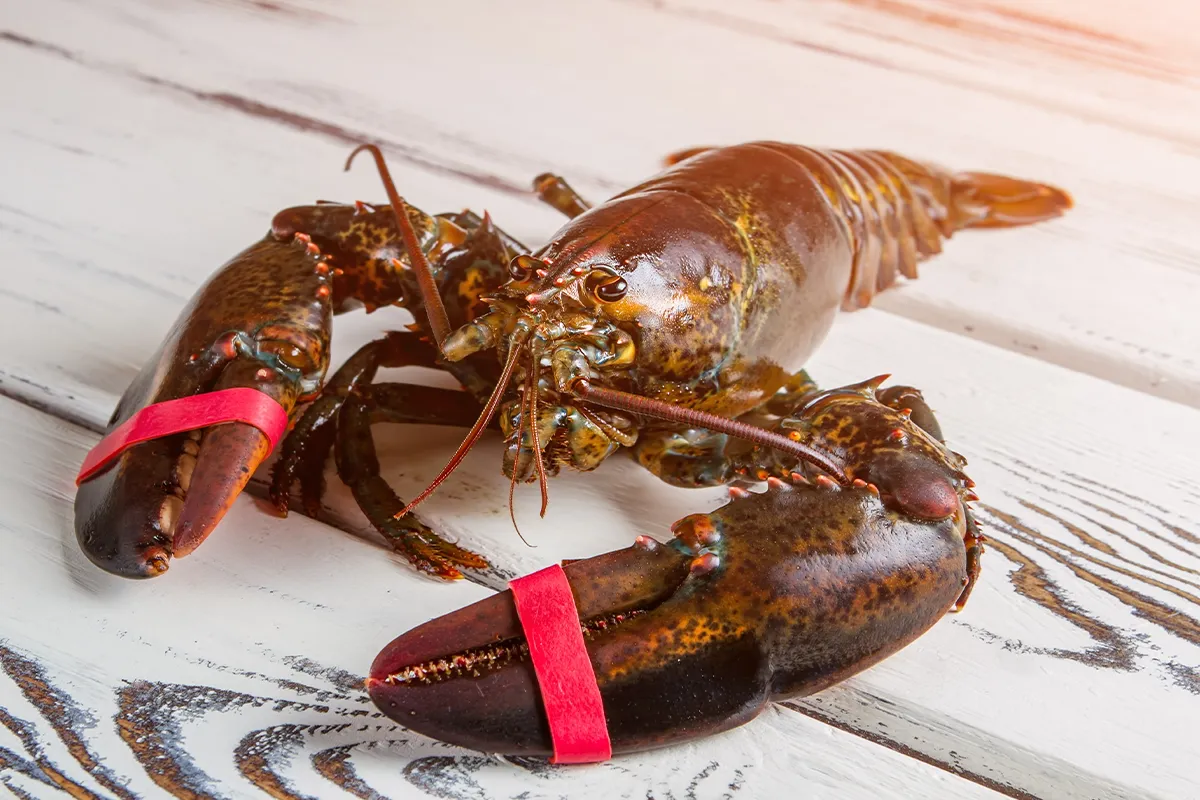
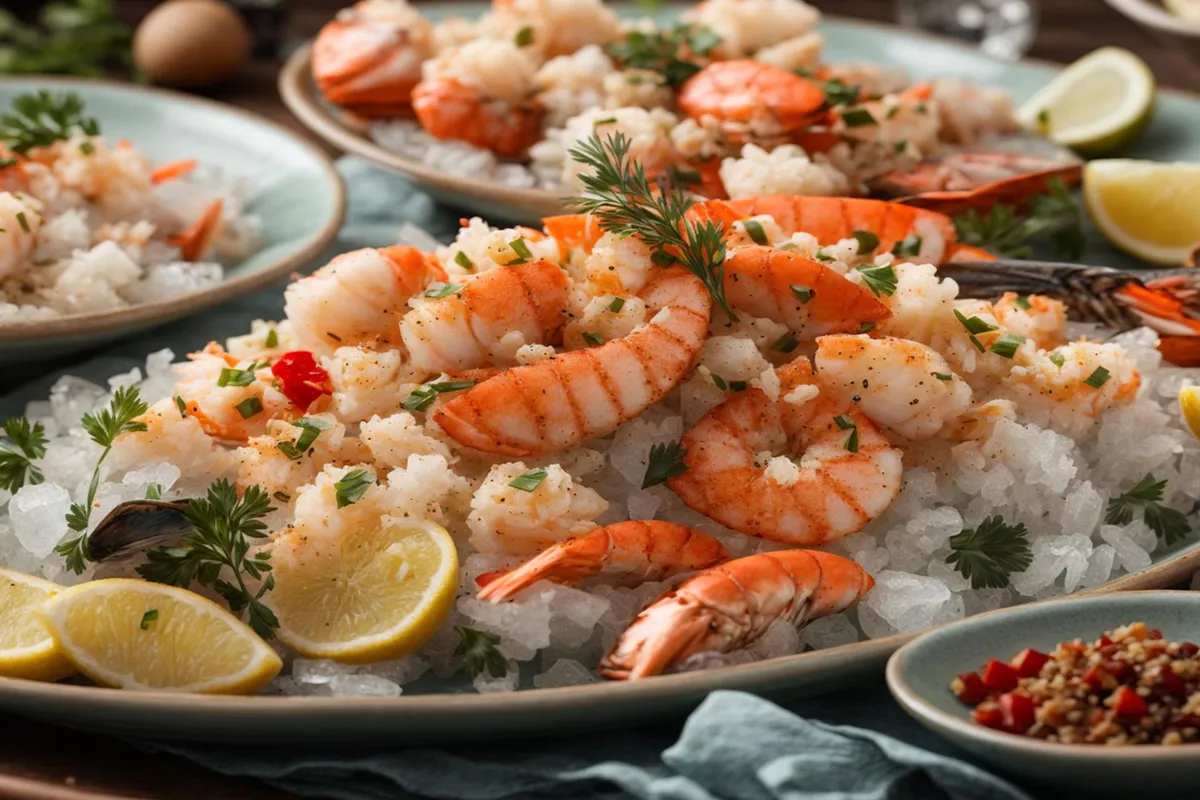
Langoustine
You might have heard of the Norwegian lobster or Dublin Bay prawn, it’s a small kind of yummy seafood preferred by the people of Europe. You can find it in a famous dish called scampi, but it’s usually more expensive than versions with fish or shrimp. The North Sea near Norway, Scotland, and northeast England is where langoustines are mostly caught. It’s best to get them from September to May. These months are when langoustines are at their peak. So, if you want the best langoustines this is the time to get them!
Langoustines are firmer and sweeter than bigger types of lobster, and you can mix them with other foods in a dish.
If you’re in North America, you’ll probably find frozen langoustines, but if you ever get the chance to buy fresh ones, look for ones with dark black eyes, that move around a lot, and don’t have any damage to their antennae, legs, or shell.
Florida Spiny Lobster
Just like other types of lobster in warm water, the Florida spiny lobster doesn’t have those big claws. But don’t worry; it still has lots of tasty meat in its tail. The meat isn’t as sweet or delicate as the kind you’d get from a Maine lobster, but it still tastes really good and goes well with all sorts of food, like pasta, soup, omelets, and gumbo. Some people say it tastes a bit like crawfish.
People also call it the Caribbean lobster, and you can find it on menus from Key West to Kingston. These lobsters live anywhere from South Carolina to Brazil. In Florida, you can usually get fresh lobster like this for about eight months out of the year.
Ornate Rock Lobster
The ornate rock lobster, also known as Panulirus Ornatus, is a cool sea creature that lives in Southeast Asia and Northern Australia. Sometimes they even end up in the Mediterranean Sea, which is pretty surprising! These types of lobster look super fancy with their cream and blue shells, and sometimes they have orange, pink, and purple colors too. They can grow really big, up to 20 inches, or even more in a short amount of time. People love to catch and eat these lobsters because they taste so good!
In Vietnam, they have a special way of farming these lobsters. They catch young lobsters and feed them until they get nice and fat. This started in the ’90s and has become popular. Most of the lobsters from Vietnam end up being sold in China for a lot of money.
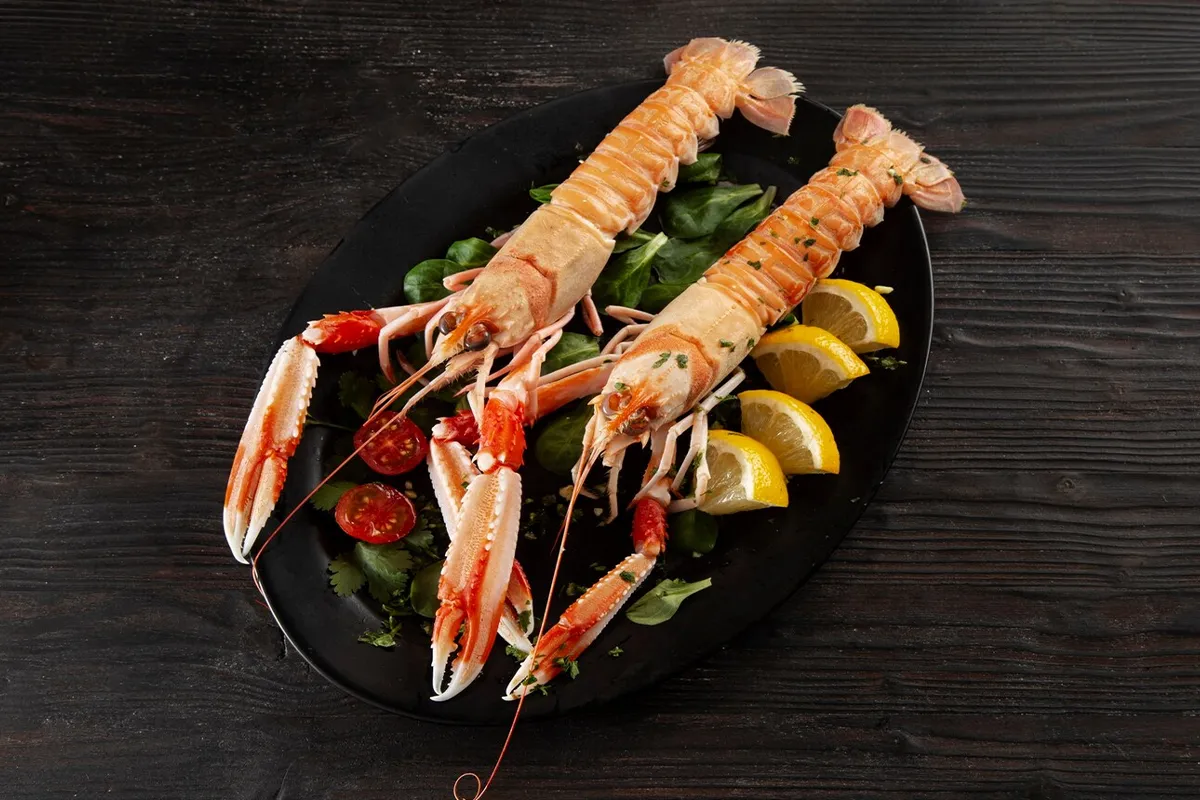
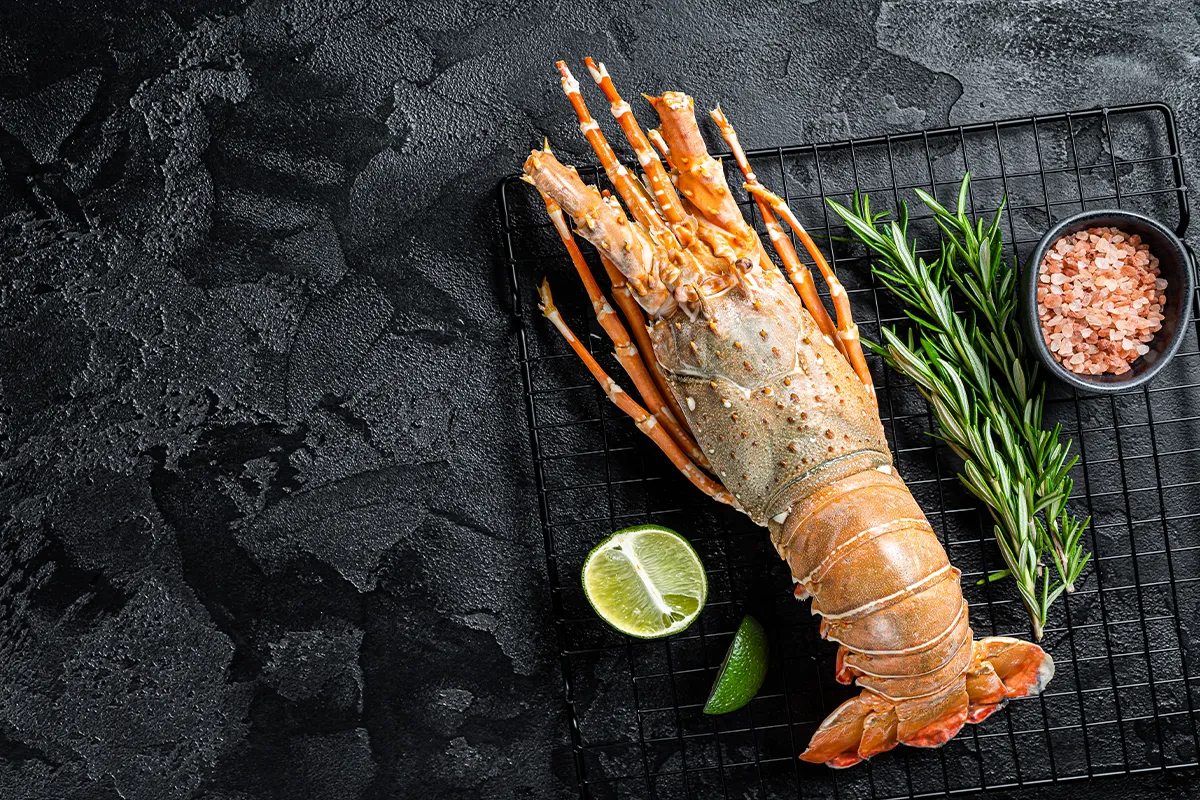
California Spiny Lobster
The California lobster is like the Caribbean lobster, but it doesn’t have claws and likes warm water. Unlike the East Coast lobster, the California lobster isn’t often eaten on the West Coast. People who live on the West Coast love them, but they’re hard for other Americans to find. People in China like them though, so most of the lobsters caught in California and Mexico end up there.
Because of this, lobsters are expensive in America, so people often choose other kinds of seafood instead.
But if you do get your hands on a California spiny lobster, you can treat yourself by boiling them, putting butter on them, grilling them for a few minutes, and then adding even more butter.
South African Lobster
The South African lobster is special because it’s not like other types of lobster. It’s all spiky and doesn’t have those big claws, kind of like a warm water lobster. But surprise, surprise, it’s a cold-water critter.
If you’re in the U.S., you’ll probably only see South African lobster tails in the frozen section. Since they don’t have claws, you won’t be missing out on much, except for something called Tomalley if you’re a fan. To make sure there are enough of these lobsters left in the sea, the government has rules about how many can be caught each year. They catch them in traps out in the wild and then freeze them right away on the boat to keep them fresh.
When you finally get your hands on a yummy South African lobster tail, you can use the frozen meat to make some really tasty lobster rolls. These special cold-water lobsters are a great way to add some fun to your cooking. Just remember to enjoy them responsibly!
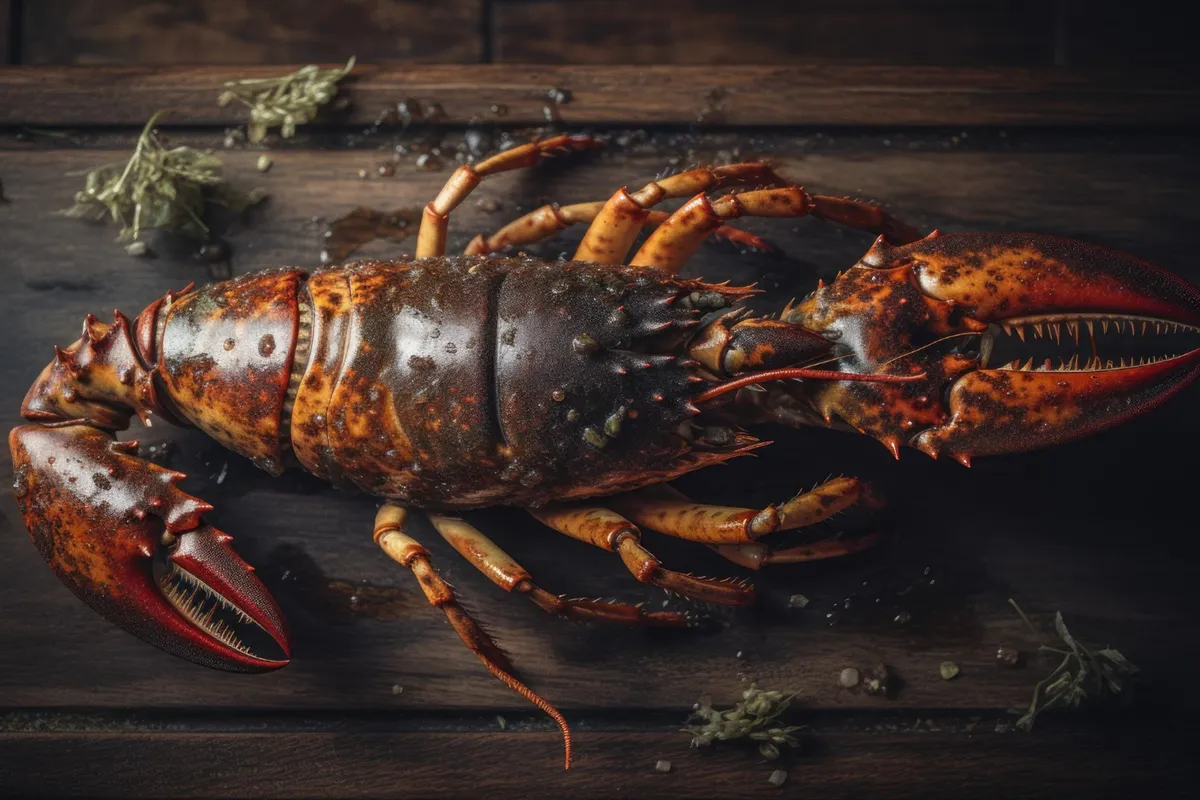
frequently asked questions
What type of lobster is the best?
The American lobster (Homarus Americanos) is widely regarded as one of the best due to its sweet and flavorful meat.
What is the rarest lobster?
The albino lobster is considered one of the rarest, with its white coloration resulting from a genetic mutation affecting pigment production.
What is the world's largest lobster?
The world’s largest recorded lobster weighed around 44 pounds and was caught off the coast of Nova Scotia, Canada.
Why do lobsters turn red when cooked?
Lobsters turn red when cooked due to a chemical reaction between proteins in their shell and heat, causing the pigments to change color.
Conclusion
In conclusion, when it comes to lobsters, there’s a whole bunch of different types of lobster out there for you to opt for, each with their specialties and yummy flavors to whip up various unique lobster recipe. With this guide you will be able to choose the right one and devour the deliciousness these beautiful critters have to offer.
